The Role of Field Studies in Effective Conservation Planning
In the intricate tapestry of our planet's ecosystems, field studies serve as the vital threads that weave together our understanding of environmental dynamics. These studies are not just academic exercises; they are the backbone of effective conservation planning. By immersing ourselves in the natural world, we gather essential data that informs our strategies for preserving biodiversity and fostering sustainable practices. Imagine trying to navigate a dense forest without a map—this is what conservation efforts would look like without the insights gained from field studies. They illuminate the path forward, ensuring that our actions are grounded in reality rather than assumptions.
Field studies provide a unique lens through which we can observe and interact with various ecosystems. They encompass a wide range of activities, from counting species populations to assessing habitat conditions. This hands-on approach allows conservationists to capture the nuances of ecological interactions, revealing patterns and relationships that are often hidden from view. For instance, a field study might uncover how a specific plant species interacts with its pollinators, providing crucial information for conservationists looking to protect both the plant and its pollinator species. This kind of knowledge is indispensable for creating informed, effective conservation strategies.
Moreover, the importance of community engagement cannot be overstated. Field studies often involve local stakeholders, fostering a sense of ownership and responsibility towards conservation efforts. When communities are actively involved in data collection and habitat assessments, they become more invested in the outcomes. This collaboration not only enriches the data collected but also builds trust between conservationists and local populations. It's a win-win situation: the community gains valuable skills and knowledge, while conservationists benefit from a deeper understanding of local ecological and social contexts.
In summary, field studies are a cornerstone of effective conservation planning. They provide critical data, assess habitat health, and engage communities in meaningful ways. As we face increasing environmental challenges, the insights gained from these studies will be more important than ever. By prioritizing field studies in our conservation efforts, we can develop strategies that are not only informed by science but also resonate with the communities that depend on these ecosystems.
- What are field studies? Field studies are research activities conducted in natural settings to collect data about ecosystems, including species interactions and habitat conditions.
- Why are field studies important for conservation planning? They provide real-world data that informs decision-making, ensuring conservation strategies are based on actual ecological conditions rather than assumptions.
- How do field studies engage local communities? By involving local stakeholders in data collection and habitat assessments, field studies foster collaboration and build trust, leading to more sustainable conservation outcomes.
- What challenges do field studies face? Challenges include funding limitations, accessibility issues, and ensuring data reliability and accuracy, which can impact the effectiveness of conservation planning.
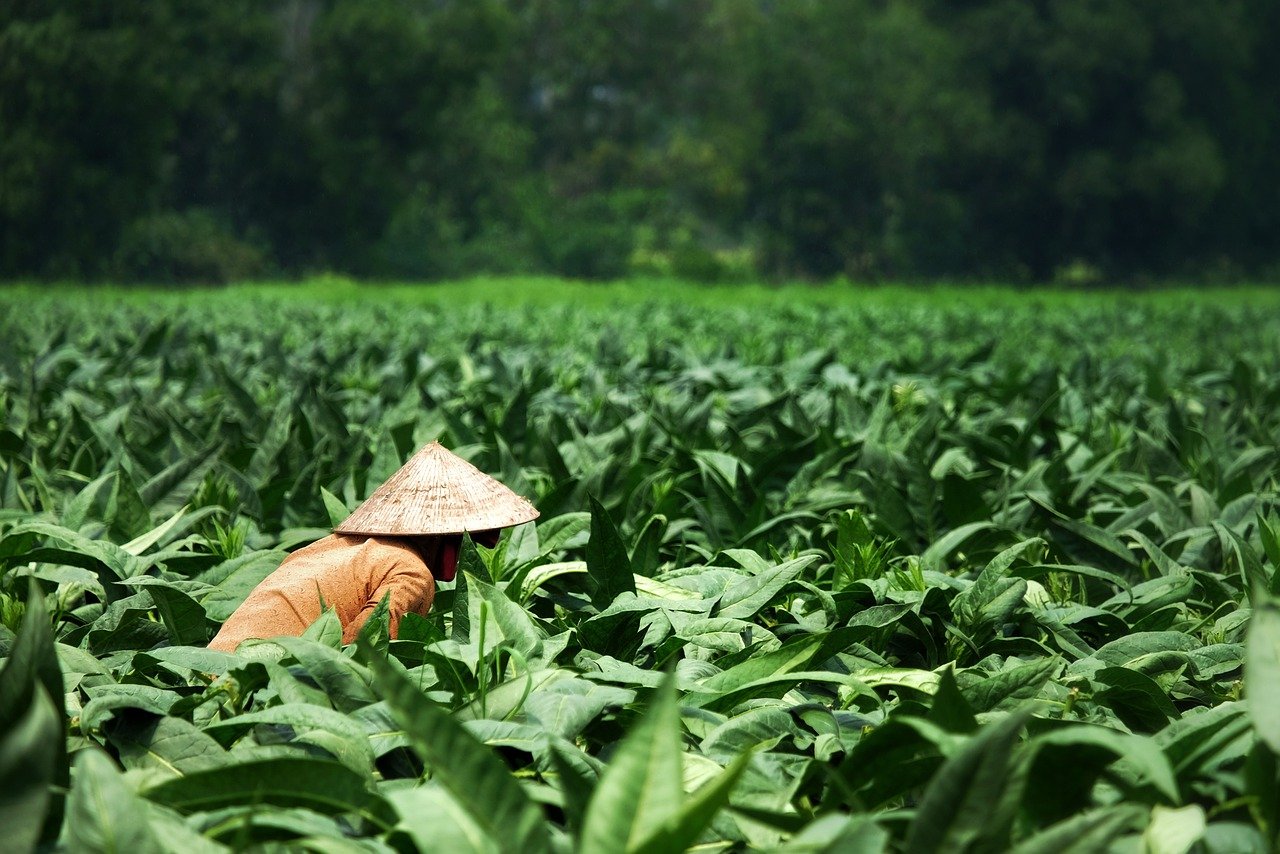
Understanding Field Studies
This article explores how field studies contribute to conservation planning, emphasizing their importance in data collection, habitat assessment, and community engagement, leading to informed and sustainable environmental management strategies.
Field studies are a cornerstone of ecological research, providing invaluable insights into the complexities of ecosystems that cannot be replicated in a laboratory setting. Imagine trying to understand a bustling city by only reading reports about it—sure, you might get some information, but you'll miss the vibrant energy, the subtle interactions, and the real-life dynamics that make it unique. Similarly, field studies immerse researchers directly into the environment, allowing them to observe and interact with the ecosystems in question.
These studies often involve a variety of methods, from direct observation and sampling to using advanced technologies like remote sensing. By stepping out into the field, scientists gather data that reflects the true state of the environment, capturing the intricate relationships between species, their habitats, and the myriad factors that influence their survival. Field studies enable researchers to witness firsthand the beauty and challenges of nature, leading to a deeper understanding of ecological processes.
Furthermore, field studies are not just about collecting numbers or data points. They also encompass qualitative aspects that provide context to the raw data. For instance, understanding the behavior of a species in its natural habitat can reveal insights into its survival strategies, mating rituals, and interactions with other species. This holistic approach enriches the data collected, allowing for more informed conservation strategies that take into account both the biological and sociocultural dimensions of ecosystems.
To illustrate the significance of field studies, consider the following key components:
- Direct Observation: This involves watching species in their natural habitat, providing insights that quantitative data alone cannot offer.
- Sampling Techniques: Researchers may use traps, nets, or other tools to collect specimens for study, ensuring a representative snapshot of the ecosystem.
- Community Involvement: Engaging local communities in field studies fosters a collaborative spirit, ensuring that conservation efforts are culturally relevant and supported by those who live in the area.
Ultimately, field studies serve as a bridge between theory and practice in conservation planning. They allow scientists to gather data that is not only accurate but also relevant to the specific ecological and social contexts of the areas they study. By understanding the intricate web of life in these environments, conservationists can craft strategies that are not only effective but also sustainable, ensuring that both nature and local communities thrive together.
- What are field studies? Field studies are research activities conducted in natural settings to collect data about ecosystems, species, and environmental conditions.
- Why are field studies important for conservation? They provide real-world data that informs conservation strategies, ensuring they are based on actual ecological conditions rather than theoretical models.
- How do field studies engage local communities? Field studies often involve local stakeholders, providing training and opportunities for participation, which fosters collaboration and support for conservation efforts.
- What challenges do field studies face? Challenges include funding limitations, accessibility issues, and ensuring the reliability and accuracy of collected data.
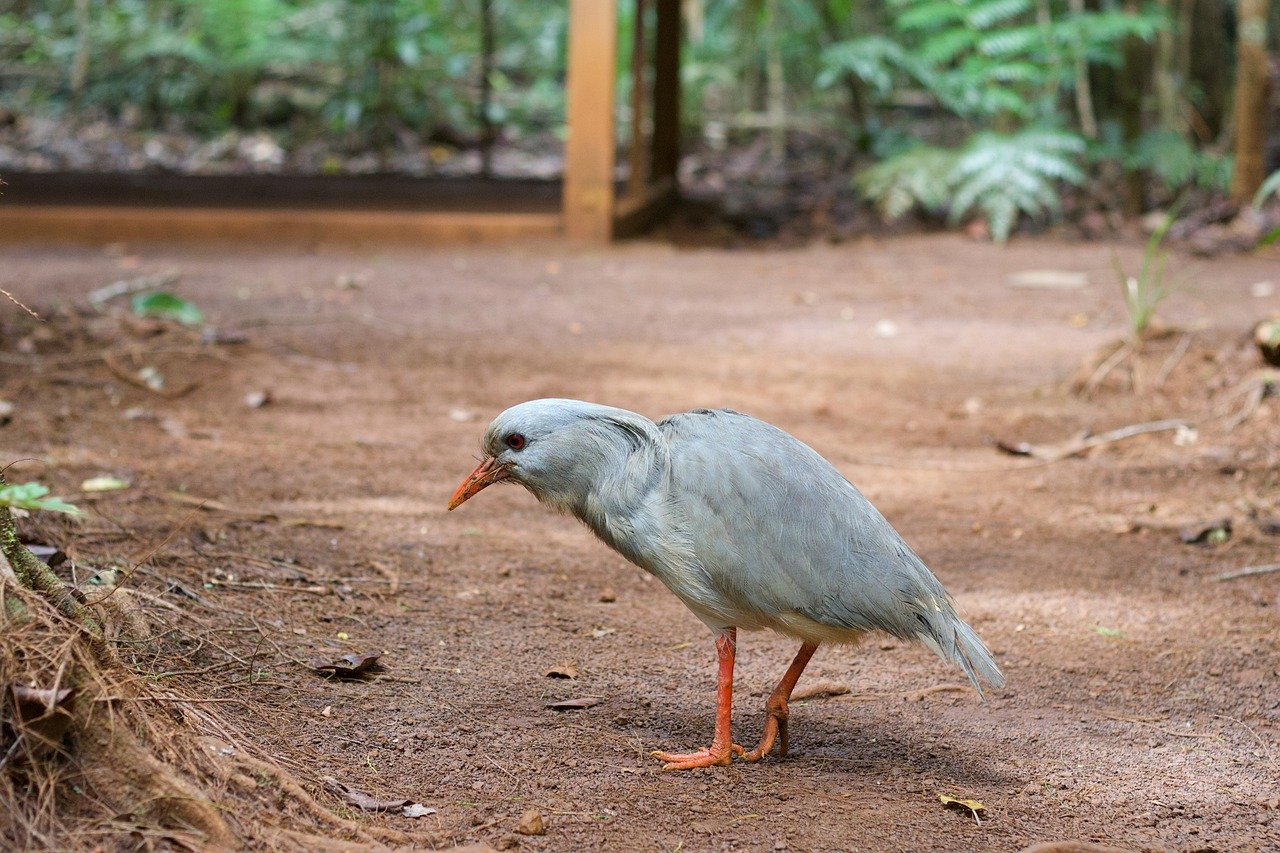
The Importance of Data Collection
This article explores how field studies contribute to conservation planning, emphasizing their importance in data collection, habitat assessment, and community engagement, leading to informed and sustainable environmental management strategies.
Field studies are essential for gathering real-world data about ecosystems. They involve direct observation and interaction with environments, providing insights that laboratory studies may not capture.
Accurate data collection is crucial in conservation planning. Field studies help gather both quantitative and qualitative data that inform decision-making processes, ensuring strategies are based on actual ecological conditions rather than assumptions. Imagine trying to navigate a dense forest without a map; that’s what conservationists face without reliable data. They need precise information on species populations, habitat conditions, and environmental stressors to paint a clear picture of the ecosystem's health.
To illustrate the significance of data collection, consider the following key aspects:
- Informed Decision-Making: Data collected during field studies helps conservationists understand the current state of the environment and predict how it may change over time.
- Resource Allocation: Accurate data allows for better allocation of resources, ensuring that funds and efforts are directed towards the most critical conservation needs.
- Monitoring Changes: Regular data collection enables ongoing monitoring of ecosystems, helping identify trends and emerging threats.
Field studies collect various types of data, each serving a unique purpose in conservation planning. For instance, quantitative data, such as population counts and measurements, provide concrete statistics that can be analyzed for trends and patterns critical to conservation efforts. On the other hand, qualitative data, including behavioral observations and community perceptions, offer context to quantitative findings. This combination enriches the understanding of ecological and social factors influencing conservation.
Ultimately, the importance of data collection in field studies cannot be overstated. It is the backbone of effective conservation planning, ensuring that strategies are not only based on sound science but are also adaptable to the ever-changing dynamics of ecosystems.
Field studies collect various data types, including species populations, habitat conditions, and environmental stressors. This comprehensive data is vital for understanding ecosystem dynamics and identifying conservation priorities.
Quantitative data, such as population counts and measurements, provide concrete statistics that can be analyzed for trends and patterns critical to conservation efforts.
Qualitative data, including behavioral observations and community perceptions, offer context to quantitative findings, enriching the understanding of ecological and social factors influencing conservation.
Different methodologies are employed in field studies, ranging from surveys and sampling techniques to remote sensing. Each method serves a unique purpose in gathering relevant data for conservation planning.
Field studies play a vital role in assessing habitat conditions. By evaluating the health of ecosystems, conservationists can identify areas needing protection or restoration, ensuring biodiversity is maintained.
Indicators such as species diversity, vegetation cover, and soil quality are assessed during field studies. These indicators help gauge the overall health of ecosystems and inform management practices.
Field studies also identify threats to habitats, including pollution, invasive species, and climate change impacts. Understanding these threats is essential for developing effective conservation strategies.
Engaging local communities in field studies fosters collaboration and support for conservation efforts. Involving stakeholders ensures that conservation strategies align with community needs and values.
Field studies often include training programs for local communities, enhancing their capacity to participate in conservation initiatives. This empowerment leads to more sustainable and locally-driven conservation outcomes.
Through collaborative field studies, trust is built between conservationists and communities. Strong relationships facilitate communication and cooperation, essential for successful conservation planning.
Despite their importance, field studies face challenges such as funding limitations, accessibility issues, and data reliability. Addressing these challenges is crucial for maximizing the effectiveness of conservation planning.
Limited funding can restrict the scope of field studies, impacting the amount and quality of data collected. Securing adequate resources is essential for comprehensive conservation efforts.
Ensuring data reliability and accuracy is a challenge in field studies. Factors such as observer bias and environmental variability can affect results, necessitating rigorous methodologies and validation processes.
Q: Why are field studies important for conservation planning?
A: Field studies provide essential real-world data that informs conservation strategies, ensuring they are based on actual ecological conditions.
Q: What types of data are collected during field studies?
A: Field studies collect both quantitative data, like population counts, and qualitative data, such as behavioral observations and community perceptions.
Q: How do field studies engage local communities?
A: Field studies often involve local communities in data collection and training programs, fostering collaboration and ensuring conservation efforts align with community values.
Q: What challenges do field studies face?
A: Challenges include funding limitations, accessibility issues, and ensuring data reliability and accuracy.

Types of Data Collected
Field studies are a treasure trove of information, collecting a wide array of data that is essential for understanding ecosystems and informing conservation strategies. The types of data gathered can be broadly categorized into two main types: quantitative and qualitative. Each type plays a pivotal role in painting a complete picture of the environmental landscape.
On one hand, quantitative data provides hard numbers that can be analyzed statistically. This includes data such as:
- Species population counts
- Measurements of habitat dimensions
- Water quality metrics
These figures are crucial for identifying trends over time, such as whether certain species are thriving or declining. For instance, a significant drop in a specific bird population could signal underlying environmental issues that need immediate attention.
On the other hand, qualitative data enriches the narrative of conservation. This type of data encompasses observations about animal behavior, community interactions, and even local perceptions of environmental changes. For example, understanding how local communities view an invasive species can provide insights into potential resistance or support for management strategies. Qualitative data helps bridge the gap between numbers and real-world implications, creating a more holistic understanding of conservation challenges.
Moreover, field studies often combine these data types to create a comprehensive assessment of ecosystems. For instance, a study may reveal that while the population of a certain fish species is stable (quantitative), local fishermen might express concerns about the declining size of individual fish (qualitative). This duality of data allows conservationists to craft more nuanced and effective strategies.
In summary, the collection of both quantitative and qualitative data during field studies is not just about numbers or observations in isolation; it’s about weaving together a complex tapestry of information that reflects the true state of our ecosystems. This comprehensive data collection is vital for identifying conservation priorities and crafting informed strategies that resonate with both ecological realities and community values.
What are field studies?
Field studies are research efforts conducted in natural environments to collect data on ecosystems, species, and habitats. They involve direct observation and interaction, allowing researchers to gather insights that lab studies may miss.
Why is data collection important in conservation planning?
Accurate data collection is crucial because it informs decision-making processes. It ensures that conservation strategies are based on real-world ecological conditions rather than assumptions, leading to more effective outcomes.
What types of data are collected in field studies?
Field studies collect both quantitative data (like population counts and habitat measurements) and qualitative data (such as behavioral observations and community perceptions). Together, they provide a well-rounded understanding of ecosystems.
How do field studies engage local communities?
Field studies often involve local communities in the data collection process, fostering collaboration and ensuring that conservation strategies align with the needs and values of those who live in the area.
What challenges do field studies face?
Challenges include funding limitations, accessibility issues, and ensuring data reliability and accuracy. Addressing these challenges is essential for maximizing the effectiveness of conservation efforts.

Quantitative Data
When it comes to conservation planning, plays a pivotal role. This type of data is all about numbers—think of it as the backbone of ecological research. It encompasses various metrics, such as population counts, measurements of species, and environmental parameters. These statistics are not just random figures; they tell a story about the ecosystem's health and its dynamics. For instance, if we observe a decline in the population of a specific species, it raises red flags about the overall health of that habitat. It’s like a canary in a coal mine, alerting us to potential issues that may require immediate attention.
To illustrate the importance of quantitative data, consider a scenario where conservationists are studying a forest ecosystem. They might collect data on:
- The number of trees per hectare
- Average tree height
- Species diversity index
- Soil moisture levels
Each of these metrics provides vital information that can be analyzed to uncover trends and patterns over time. For example, a decrease in tree height or density can indicate stress factors such as drought or disease. This information is crucial for developing targeted conservation strategies that can effectively address the issues at hand.
Moreover, the analysis of quantitative data allows conservationists to make informed decisions. By employing statistical methods, they can identify correlations and causations, helping to prioritize areas that need urgent conservation efforts. Imagine trying to bake a cake without knowing the right proportions of ingredients; that's what conservation planning would be like without accurate quantitative data. It provides the necessary framework to ensure that our strategies are not only effective but also sustainable.
In addition to the direct ecological data, quantitative approaches often involve the use of technology, such as remote sensing and Geographic Information Systems (GIS). These tools allow for the collection of large datasets over extensive areas, which can be analyzed for spatial patterns. For instance, a GIS analysis might reveal habitat fragmentation or changes in land use that are affecting biodiversity. This level of insight is invaluable for conservationists as they navigate the complexities of ecosystem management.
In summary, quantitative data is more than just numbers; it’s a critical component of effective conservation planning. It equips conservationists with the tools to assess the health of ecosystems, identify threats, and develop strategies that are grounded in reality. Without it, our efforts to protect and preserve the environment would be akin to navigating a ship without a compass—uncertain and prone to misdirection.
- What is quantitative data in conservation? Quantitative data refers to numerical information that helps measure and analyze ecological conditions, such as population sizes and habitat metrics.
- Why is quantitative data important for conservation planning? It provides concrete evidence that informs decision-making and helps prioritize conservation efforts based on actual ecological conditions.
- How is quantitative data collected? It can be collected through various methods, including field surveys, remote sensing, and statistical analysis of ecological metrics.
- Can qualitative data complement quantitative data? Absolutely! Qualitative data provides context and deeper insights, which enhance the understanding gained from quantitative analyses.

Qualitative Data
plays a pivotal role in conservation planning, offering a rich, contextual understanding that numbers alone cannot provide. While quantitative data gives us the hard facts—like how many species are in a given area—qualitative data delves deeper, exploring the why and how behind those numbers. It captures the narratives of ecosystems and communities, revealing the intricate relationships between species, their habitats, and the human factors that influence them.
For instance, consider a situation where a particular bird species is declining in a region. Quantitative data might show a 30% drop in its population over the last decade. However, qualitative data collected through interviews with local residents may uncover that this decline correlates with changes in local agricultural practices, habitat destruction, or even the introduction of new predators. This personal insight adds depth to the statistical analysis, guiding conservationists in crafting targeted, effective strategies.
Moreover, qualitative data often includes behavioral observations of species in their natural habitats. Understanding how animals interact with their environment, their mating rituals, or their feeding habits can provide critical information on their ecological roles and needs. These observations might reveal, for example, that a certain plant species is vital for the survival of a particular insect, which in turn supports a larger food web. Without qualitative insights, such interdependencies might go unnoticed.
In addition to ecological data, qualitative research also captures the perceptions and values of local communities regarding conservation efforts. Engaging with community members through focus groups or participatory workshops can illuminate their views on biodiversity, resource management, and conservation priorities. This engagement not only enriches the data pool but also fosters a sense of ownership among community members, making them more likely to support and participate in conservation initiatives.
To summarize, qualitative data is not merely supplementary; it is a critical component of a holistic approach to conservation planning. By integrating qualitative insights with quantitative findings, conservationists can develop a more comprehensive understanding of ecosystems, leading to more informed and sustainable management strategies.
- What is qualitative data in conservation?
Qualitative data refers to non-numeric information that provides context and depth to conservation efforts, such as species behavior, community opinions, and ecological interactions. - Why is qualitative data important?
It helps conservationists understand the underlying factors affecting ecosystems, allowing for more effective and tailored conservation strategies. - How is qualitative data collected?
Methods include interviews, focus groups, observations, and participatory workshops with local communities and stakeholders. - Can qualitative data be quantified?
While qualitative data is inherently descriptive, it can be analyzed and categorized to identify patterns, themes, or trends that can complement quantitative findings.

Methodologies in Field Studies
This article explores how field studies contribute to conservation planning, emphasizing their importance in data collection, habitat assessment, and community engagement, leading to informed and sustainable environmental management strategies.
Field studies are essential for gathering real-world data about ecosystems. They involve direct observation and interaction with environments, providing insights that laboratory studies may not capture.
Accurate data collection is crucial in conservation planning. Field studies help gather quantitative and qualitative data that inform decision-making processes, ensuring strategies are based on actual ecological conditions.
Field studies collect various data types, including species populations, habitat conditions, and environmental stressors. This comprehensive data is vital for understanding ecosystem dynamics and identifying conservation priorities.
Quantitative data, such as population counts and measurements, provide concrete statistics that can be analyzed for trends and patterns critical to conservation efforts.
Qualitative data, including behavioral observations and community perceptions, offer context to quantitative findings, enriching the understanding of ecological and social factors influencing conservation.
Different methodologies are employed in field studies, each designed to gather specific data relevant to conservation planning. These methodologies can be broadly classified into several categories, including:
- Surveys: These involve systematic observation and data collection over a specific area. Surveys can be conducted in various forms, such as point counts for bird populations or transects for plant species.
- Sampling Techniques: These methods, like random sampling or stratified sampling, allow researchers to gather representative data from larger populations without needing to examine every individual.
- Remote Sensing: Utilizing satellite imagery and aerial photography, remote sensing provides a macro perspective on habitat changes, land use, and environmental conditions. This is particularly useful for large-scale conservation efforts.
- Experimental Methods: Experiments can be set up in the field to test specific hypotheses about ecological interactions, such as the effects of invasive species on native populations.
Each of these methodologies serves a unique purpose in gathering relevant data for conservation planning. For example, surveys might reveal population declines in a specific species, while remote sensing can show habitat loss due to urban development. Together, these methodologies create a robust framework for understanding the complexities of ecosystems.
Moreover, the integration of technology in field studies, such as the use of drones for aerial surveys or GPS for tracking wildlife, has revolutionized data collection. These advancements not only enhance the accuracy of data but also allow researchers to cover larger areas in less time, making field studies more efficient and effective.
In conclusion, the methodologies employed in field studies are diverse and tailored to meet the specific needs of conservation planning. By utilizing a combination of traditional and modern techniques, conservationists can gather comprehensive data that informs sustainable management strategies.
Field studies play a vital role in assessing habitat conditions. By evaluating the health of ecosystems, conservationists can identify areas needing protection or restoration, ensuring biodiversity is maintained.
Indicators such as species diversity, vegetation cover, and soil quality are assessed during field studies. These indicators help gauge the overall health of ecosystems and inform management practices.
Field studies also identify threats to habitats, including pollution, invasive species, and climate change impacts. Understanding these threats is essential for developing effective conservation strategies.
Engaging local communities in field studies fosters collaboration and support for conservation efforts. Involving stakeholders ensures that conservation strategies align with community needs and values.
Field studies often include training programs for local communities, enhancing their capacity to participate in conservation initiatives. This empowerment leads to more sustainable and locally-driven conservation outcomes.
Through collaborative field studies, trust is built between conservationists and communities. Strong relationships facilitate communication and cooperation, essential for successful conservation planning.
Despite their importance, field studies face challenges such as funding limitations, accessibility issues, and data reliability. Addressing these challenges is crucial for maximizing the effectiveness of conservation planning.
Limited funding can restrict the scope of field studies, impacting the amount and quality of data collected. Securing adequate resources is essential for comprehensive conservation efforts.
Ensuring data reliability and accuracy is a challenge in field studies. Factors such as observer bias and environmental variability can affect results, necessitating rigorous methodologies and validation processes.
Q: What are field studies?
A: Field studies are research activities conducted in natural environments to collect data on ecosystems, species, and habitats through direct observation and interaction.
Q: Why are field studies important for conservation?
A: They provide essential real-world data that informs conservation strategies, helping to identify ecological conditions and community needs.
Q: What types of data are collected in field studies?
A: Field studies collect both quantitative data (like population counts) and qualitative data (like behavioral observations) to provide a comprehensive understanding of ecosystems.
Q: How do field studies engage local communities?
A: By involving local stakeholders in the research process, field studies foster collaboration, build trust, and ensure that conservation efforts align with community values.

Assessing Habitat Conditions
Field studies play a vital role in assessing habitat conditions. By evaluating the health of ecosystems, conservationists can identify areas needing protection or restoration, ensuring that biodiversity is maintained. Think of it like a doctor examining a patient; just as a doctor checks vital signs and symptoms to determine a treatment plan, conservationists assess various indicators to understand the health of an ecosystem. This process involves a careful examination of multiple factors that contribute to the overall well-being of the habitat.
One of the primary objectives of assessing habitat conditions is to identify key indicators of habitat health. These indicators can include species diversity, vegetation cover, and soil quality. For instance, a diverse array of species can signify a healthy ecosystem, while a decline in diversity might indicate underlying issues such as habitat degradation or pollution. Similarly, vegetation cover, which serves as both habitat and food source for many organisms, is crucial in maintaining ecological balance.
During field studies, conservationists often use a combination of quantitative and qualitative assessments to gauge habitat conditions. Quantitative data might involve measuring the number of species present or calculating the percentage of vegetation cover, while qualitative assessments could include observations about the health of individual plants or the presence of invasive species. This dual approach allows for a more comprehensive understanding of the ecosystem.
Moreover, field studies are instrumental in identifying threats to habitat. Pollution, invasive species, and climate change are just a few of the challenges that ecosystems face today. For example, pollution can lead to water quality degradation, affecting both aquatic life and terrestrial species that rely on these water sources. Invasive species can outcompete native flora and fauna, disrupting established ecological relationships. Understanding these threats is essential for developing effective conservation strategies.
To illustrate the importance of assessing habitat conditions, consider the following table that outlines common indicators and their implications:
| Indicator | Implication |
|---|---|
| Species Diversity | Higher diversity indicates a resilient ecosystem capable of withstanding environmental changes. |
| Vegetation Cover | Healthy vegetation cover supports wildlife and prevents soil erosion. |
| Soil Quality | Good soil quality promotes plant growth and supports the entire food web. |
In conclusion, assessing habitat conditions through field studies is not just about gathering data; it’s about understanding the intricate web of life that exists within ecosystems. By identifying indicators of health and recognizing threats, conservationists can make informed decisions that lead to effective and sustainable management strategies. The future of our planet relies on these assessments, making them a cornerstone of conservation planning.
- What are habitat assessments? Habitat assessments are evaluations conducted to determine the health and quality of an ecosystem, focusing on various indicators such as species diversity and vegetation cover.
- Why are field studies important in conservation? Field studies provide real-world data that informs conservation strategies, ensuring they are based on actual ecological conditions rather than theoretical models.
- How can communities get involved in habitat assessments? Local communities can participate in habitat assessments through training programs and collaborative projects, enhancing their capacity to contribute to conservation efforts.

Indicators of Habitat Health
Assessing the health of an ecosystem is akin to checking the vital signs of a patient; it provides essential insights into its overall well-being. Various serve as key metrics that conservationists rely on to gauge the status of an ecosystem. These indicators can be categorized into several critical areas, each revealing unique aspects of habitat vitality.
One of the primary indicators is species diversity. A rich variety of species typically signifies a healthy ecosystem, as it suggests a balanced food web and robust interactions among organisms. Conversely, a decline in species diversity can signal environmental stress, such as pollution or habitat destruction. For example, if certain species begin to vanish, it may indicate that the habitat is no longer able to support them, thereby prompting further investigation into the underlying causes.
Another crucial indicator is vegetation cover. Healthy vegetation not only provides essential habitat for wildlife but also plays a vital role in soil stabilization and water retention. When assessing vegetation cover, conservationists look for a variety of plant species, the density of the plant community, and the presence of native versus invasive species. Invasive plants can outcompete native flora, leading to a decline in biodiversity and altering the ecosystem's balance.
Soil quality is yet another indicator that cannot be overlooked. Healthy soil supports plant growth, retains moisture, and fosters a diverse array of microorganisms. Factors such as nutrient content, pH levels, and organic matter contribute to soil health. Regular field studies often include soil sampling and analysis to determine whether the soil can support the variety of plant life necessary for a thriving habitat.
To summarize, the indicators of habitat health can be visualized as a multi-faceted approach to understanding ecosystem dynamics. Key indicators include:
- Species Diversity: A measure of the variety of species present in an ecosystem.
- Vegetation Cover: The extent and health of plant life in the habitat.
- Soil Quality: The condition of the soil that supports plant and animal life.
By continuously monitoring these indicators, conservationists can make informed decisions about management practices, restoration efforts, and conservation priorities. It's a proactive approach that not only addresses current issues but also anticipates future challenges, ensuring the sustainability of our precious ecosystems.
Q1: What are the main indicators of habitat health?
A1: The main indicators include species diversity, vegetation cover, and soil quality. Each of these factors provides insight into the overall health and sustainability of an ecosystem.
Q2: How do field studies contribute to understanding habitat health?
A2: Field studies allow conservationists to collect real-world data on various indicators, enabling them to assess the current state of ecosystems and make informed management decisions.
Q3: Why is species diversity important?
A3: Species diversity is crucial because it reflects the resilience of an ecosystem. A diverse array of species can better withstand environmental changes and stresses, maintaining ecological balance.
Q4: Can habitat health indicators change over time?
A4: Yes, habitat health indicators can change due to various factors such as climate change, human activities, and natural events. Continuous monitoring is essential to detect these changes early.
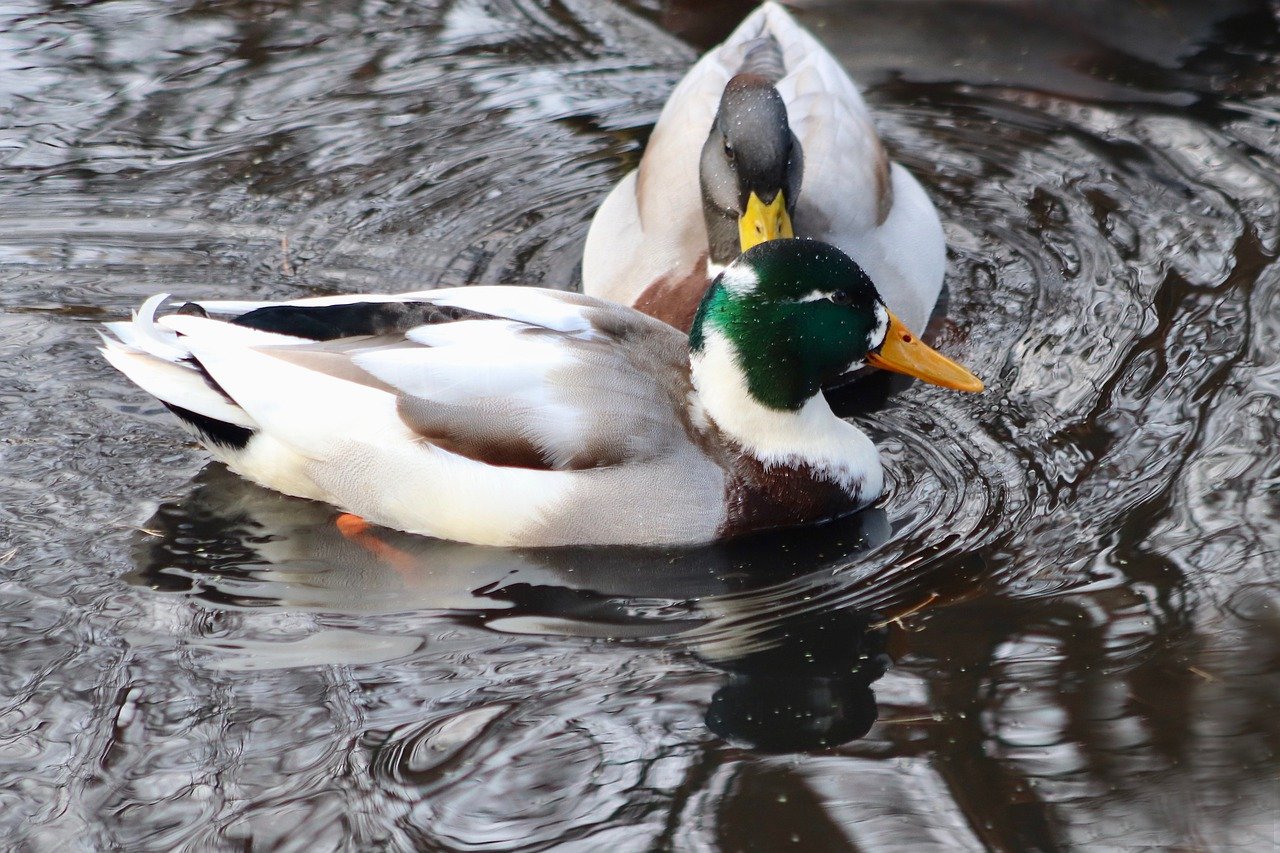
Threats to Habitat
When we think about the beauty and complexity of our natural ecosystems, it's easy to overlook the myriad of threats that lurk beneath the surface, ready to disrupt the delicate balance of life. Habitat loss is one of the most pressing issues facing our environment today. This loss can stem from various sources, including urban development, agriculture, and deforestation, each contributing to the fragmentation of ecosystems. When habitats are destroyed or altered, the species that depend on them find themselves in peril, leading to a cascade of ecological consequences.
Another significant threat comes from pollution. Contaminants can seep into our waterways, soil, and air, affecting not only the habitats but also the organisms that inhabit them. For instance, run-off from agricultural fields can introduce harmful pesticides and fertilizers into nearby ecosystems, disrupting the natural food chain and harming wildlife. The impact of pollution is often insidious, leading to long-term health issues for both wildlife and humans alike.
Furthermore, the introduction of invasive species poses a serious risk to native biodiversity. These non-native organisms can outcompete local species for resources, disrupt food webs, and introduce diseases. Take the example of the zebra mussel in North America: this small mollusk has wreaked havoc on local ecosystems by outcompeting native mussels and altering the aquatic environment. The repercussions of such invasions can be devastating and often irreversible.
Lastly, we cannot ignore the looming threat of climate change. As temperatures rise and weather patterns become increasingly erratic, the habitats that many species rely on are shifting or disappearing altogether. For example, coral reefs, which are vital to marine biodiversity, are experiencing mass bleaching events due to warmer ocean temperatures. This not only affects the corals themselves but also the countless species that depend on these reefs for shelter and food.
Addressing these threats requires a multifaceted approach. Conservationists must engage in rigorous monitoring of habitats to identify changes and threats early on. Collaboration with local communities is also crucial, as they often possess invaluable knowledge about the land and its challenges. By fostering a sense of stewardship, we can empower individuals to take action in their own backyards, whether it’s participating in clean-up efforts, advocating for sustainable practices, or simply spreading awareness about the importance of preserving our natural world.
In summary, the threats to habitats are numerous and complex, but by understanding them, we can develop more effective conservation strategies. It's a call to action for all of us to protect the spaces that sustain life on our planet.
- What are the main threats to habitats? The main threats include habitat loss due to urban development, pollution, invasive species, and climate change.
- How can local communities help in conservation efforts? Local communities can engage in monitoring, participate in clean-up initiatives, and advocate for sustainable practices.
- Why is it important to assess habitat conditions? Assessing habitat conditions helps identify areas that need protection or restoration, ensuring biodiversity is maintained.
- What role do field studies play in understanding habitat threats? Field studies provide real-world data that helps identify and analyze threats, allowing for informed conservation planning.

Community Engagement in Conservation
Engaging local communities in conservation efforts is not just a nice-to-have; it's a necessity for effective environmental management. When communities are involved, they become stakeholders in the health of their surroundings, fostering a sense of ownership that is crucial for sustainable practices. Think of it like a neighborhood watch program—when people feel invested in their community, they're more likely to protect it. Community engagement is about creating partnerships that bring together conservationists and local residents to work towards common goals.
One of the most significant benefits of involving communities in conservation is the wealth of knowledge they bring to the table. Local people often have a deep understanding of their environment, having lived in it for generations. This indigenous knowledge can provide valuable insights into local ecosystems, species interactions, and historical changes that might not be evident through scientific studies alone. Moreover, when conservationists actively listen to community voices, they can tailor strategies that are not only effective but also culturally appropriate.
Training and capacity building are essential components of community engagement. Many conservation projects include educational programs designed to empower local residents. These programs often cover topics such as biodiversity, sustainable resource management, and the importance of conservation. By equipping communities with the necessary skills and knowledge, they can actively participate in conservation initiatives, making a lasting impact. For instance, workshops might teach locals about native species and their habitats, or how to monitor environmental changes in their area.
Building trust and strong relationships is another critical aspect of community engagement. When conservationists collaborate with local communities, they create a foundation of trust that is essential for successful conservation planning. This relationship fosters open communication, allowing for the exchange of ideas and concerns. Furthermore, when communities feel heard and respected, they are more likely to support conservation efforts, which can lead to more sustainable outcomes. It's like planting a seed: with nurturing and care, it can grow into a strong and resilient tree.
However, community engagement is not without its challenges. Misunderstandings and mistrust can arise, particularly if communities feel that their needs and values are being overlooked. To mitigate these issues, it is crucial for conservationists to engage in transparent communication and ensure that community input is genuinely valued. This means being open about project goals, potential impacts, and the decision-making processes involved. When communities see that their voices matter, they are more likely to become active participants in conservation efforts.
In summary, community engagement in conservation is a powerful approach that benefits both the environment and the people who depend on it. By fostering collaboration, building trust, and empowering local communities, conservationists can create more effective and sustainable environmental management strategies. After all, conservation is not just about protecting nature; it’s about creating a harmonious relationship between people and the planet.
- Why is community engagement important in conservation? Community engagement is crucial because it fosters ownership, ensures that conservation strategies are culturally appropriate, and utilizes local knowledge for better decision-making.
- How can communities get involved in conservation efforts? Communities can get involved through educational programs, volunteer opportunities, and by participating in local conservation initiatives and planning processes.
- What are some challenges in community engagement? Challenges include building trust, overcoming misunderstandings, and ensuring that community voices are genuinely considered in conservation planning.
- What role does local knowledge play in conservation? Local knowledge provides insights into ecosystems and historical changes that can enhance scientific understanding and inform better conservation strategies.

Training and Capacity Building
Training and capacity building are pivotal components of successful field studies, especially when it comes to engaging local communities in conservation efforts. By providing community members with the necessary skills and knowledge, conservationists can empower them to take an active role in protecting their environment. Imagine a group of local residents equipped with the tools to monitor wildlife populations or assess habitat health; this not only enhances their understanding of ecological dynamics but also fosters a sense of ownership over local conservation initiatives.
Through structured training programs, community members learn various methodologies used in field studies, including data collection techniques, species identification, and the use of technology such as GPS and remote sensing. This hands-on experience is invaluable, as it transforms theoretical knowledge into practical skills. Additionally, workshops and field training sessions can be organized to ensure that participants gain real-world experience, making the learning process engaging and effective.
Furthermore, capacity building extends beyond just technical skills. It encompasses building confidence and leadership within the community. When individuals feel empowered, they are more likely to advocate for conservation initiatives and collaborate with conservationists. This collaborative spirit is crucial, as it bridges the gap between scientific research and local knowledge, leading to more effective and culturally relevant conservation strategies.
To illustrate the impact of training and capacity building, consider the following table that outlines some of the key benefits:
| Benefits of Training and Capacity Building | Description |
|---|---|
| Empowerment | Community members gain confidence and skills to participate actively in conservation efforts. |
| Enhanced Data Collection | Trained individuals can collect more accurate and reliable data, improving conservation planning. |
| Stronger Partnerships | Building trust and collaboration between conservationists and local communities fosters long-term relationships. |
| Increased Awareness | Training raises awareness about environmental issues, promoting collective action for conservation. |
In conclusion, training and capacity building are not just add-ons to field studies; they are essential for creating a sustainable model of conservation that is rooted in community involvement. By investing in local knowledge and skills, conservationists can ensure that their efforts are not only effective but also resonate with the people who depend on these ecosystems for their livelihoods. After all, when communities are equipped to lead conservation initiatives, the chances of success multiply, creating a win-win situation for both nature and the people who cherish it.
- What is the purpose of training in conservation?
Training helps community members acquire the skills necessary for effective participation in conservation efforts, enhancing the overall effectiveness of these initiatives. - How does capacity building benefit local communities?
It empowers individuals by providing them with knowledge and tools, fostering a sense of ownership and advocacy for their environment. - What types of training are typically offered?
Training can include data collection techniques, species identification, technology use, and leadership skills. - Why is community engagement important in conservation?
Engaging communities ensures that conservation strategies are culturally relevant and more likely to be supported and sustained over time.

Building Trust and Relationships
Building trust and relationships between conservationists and local communities is akin to planting a seed in fertile soil. Just as a seed needs care and nurturing to grow, so too do these relationships require time, effort, and genuine engagement. When conservationists actively involve community members in field studies, they create a sense of ownership and responsibility towards the environment. This collaboration is not just beneficial; it’s essential for the success of conservation initiatives.
One effective way to foster trust is through transparent communication. When conservationists openly share their goals, findings, and the implications of their work, they demystify the process and allow community members to understand their role in conservation. This transparency can be achieved through regular meetings, workshops, and informative sessions, where local people can voice their concerns and contribute ideas. Such interactions help bridge the gap between scientific research and local knowledge, creating a more holistic approach to conservation.
Moreover, involving community members in the collection and analysis of data not only empowers them but also enhances the quality of the research. Local people often possess invaluable insights about their environment, including historical changes and current challenges. By integrating this knowledge with scientific data, conservationists can develop more effective and contextually relevant strategies. For instance, when assessing the impact of an invasive species, local anecdotes about its introduction and spread can provide critical information that researchers might overlook.
Training programs are another cornerstone in building these relationships. By equipping community members with the skills needed to participate in conservation efforts—such as data collection techniques, species identification, and habitat assessment—conservationists not only enhance local capacity but also instill a sense of pride and accomplishment. This empowerment leads to a more sustainable approach, as community members become advocates for conservation in their own right.
Ultimately, the foundation of successful conservation planning lies in the strength of relationships established through mutual respect and collaboration. By investing in these connections, conservationists can create a network of support that not only aids in immediate conservation goals but also fosters long-term stewardship of the environment. In this way, both parties—scientists and community members—can work together towards a shared vision of a healthy, sustainable ecosystem.
- Why is community engagement important in conservation?
Community engagement ensures that conservation strategies are relevant and effective, as local people often have unique insights and knowledge about their ecosystems. - How can trust be built between conservationists and communities?
Trust can be built through transparent communication, involving community members in data collection, and providing training programs that empower locals. - What role does local knowledge play in field studies?
Local knowledge enriches field studies by providing context and insights that may not be captured through scientific research alone. - What are some challenges faced in building relationships with communities?
Challenges include historical mistrust, communication barriers, and differing priorities between conservationists and local stakeholders.
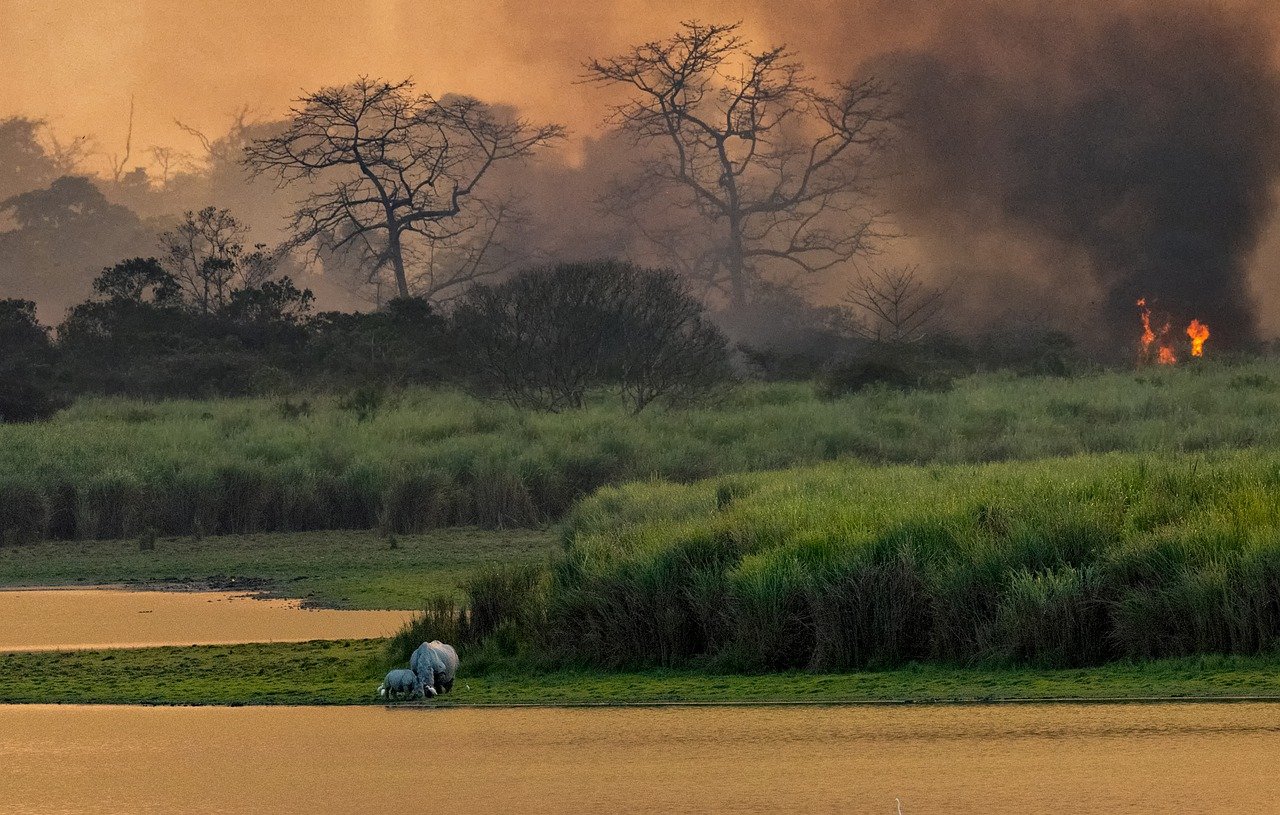
Challenges in Field Studies
Despite their critical role in conservation planning, field studies are not without their challenges. One of the most significant hurdles is funding limitations. Many conservation projects rely on grants, donations, or government support, which can be unpredictable. This uncertainty often leads to restricted budgets that impact the scope and duration of field studies. Imagine trying to explore a vast forest with only a handful of resources; it’s like trying to solve a puzzle with missing pieces. Limited funding can hinder the collection of comprehensive data, which is essential for making informed decisions about conservation strategies.
Moreover, accessibility issues present another challenge. Some ecosystems are located in remote or difficult-to-reach areas, making it hard for researchers to gather data effectively. This situation can lead to gaps in information, especially in regions that are critical for biodiversity. Picture a team of scientists eager to study a unique wetland, only to find that the roads are washed out or that they lack the necessary permits. Such obstacles can delay research and lead to missed opportunities for timely conservation actions.
In addition to funding and accessibility, data reliability and accuracy are paramount concerns in field studies. The integrity of the data collected can be compromised by various factors, including observer bias and environmental variability. For instance, if a researcher has a preconceived notion about a species' population size, they might unconsciously skew their observations. To mitigate these issues, it is crucial to implement rigorous methodologies and validation processes. The goal is to ensure that the findings reflect the true state of the ecosystem, enabling conservationists to devise effective strategies.
Furthermore, the complexity of ecosystems poses another layer of difficulty. Ecosystems are dynamic and influenced by numerous interrelated factors, making it challenging to isolate specific variables during field studies. For example, when assessing the impact of climate change, researchers must consider various elements such as temperature shifts, rainfall patterns, and species interactions, all of which can complicate data interpretation. This complexity necessitates a multidisciplinary approach, often requiring collaboration among ecologists, sociologists, and other experts.
Lastly, the need for community engagement cannot be overlooked. While involving local communities in field studies can enhance data collection and foster support for conservation efforts, it also introduces challenges. Different stakeholders may have conflicting interests or varying levels of understanding about conservation issues. Therefore, it is essential to navigate these dynamics carefully to build effective partnerships. Engaging communities requires time, patience, and a commitment to open communication, which can sometimes be at odds with the urgency of conservation needs.
In summary, while field studies are invaluable for conservation planning, they face several challenges that must be addressed to maximize their effectiveness. From funding constraints and accessibility issues to concerns about data reliability and the complexities of ecosystems, each challenge presents unique obstacles that conservationists must navigate. By acknowledging these challenges and developing strategies to overcome them, we can enhance the impact of field studies and ultimately contribute to more effective conservation outcomes.
- What are field studies? Field studies involve direct observation and interaction with ecosystems to gather real-world data.
- Why is data collection important in conservation? Accurate data collection informs decision-making processes, ensuring strategies are based on actual ecological conditions.
- What types of data are collected during field studies? Field studies collect both quantitative data (like population counts) and qualitative data (such as behavioral observations).
- How do field studies engage local communities? They often involve training programs and collaborative efforts, fostering trust and support for conservation initiatives.
- What challenges do field studies face? Challenges include funding limitations, accessibility issues, data reliability, and the need for community engagement.
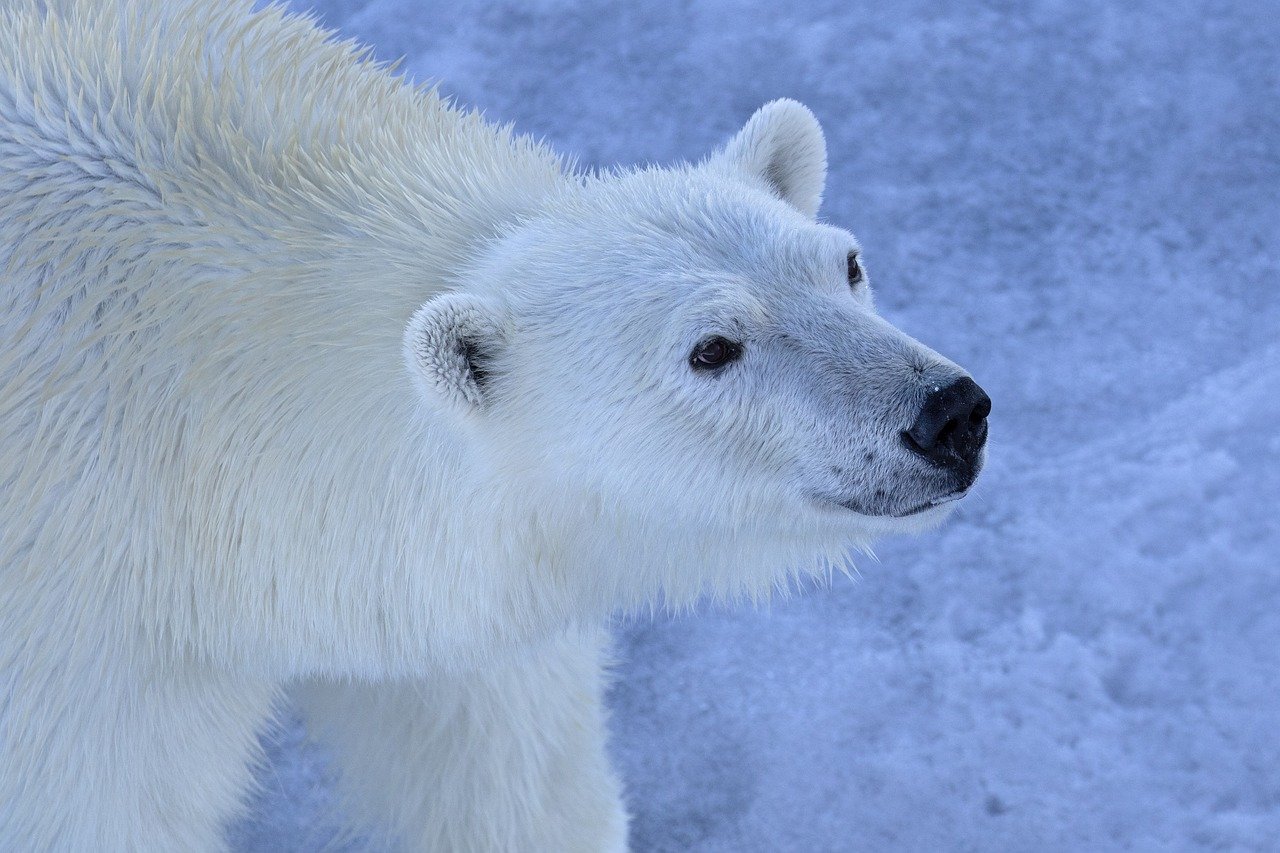
Funding and Resources
In the realm of conservation, securing adequate funding and resources is akin to finding the right fuel for a fire; without it, the flames of conservation efforts can quickly dwindle. Field studies, while essential for gathering crucial data, often face significant financial challenges that can limit their scope and effectiveness. Many conservation projects rely on grants, donations, and governmental support, but the competition for these funds is fierce. In fact, a recent survey indicated that nearly 70% of conservation initiatives struggle with inadequate funding, which can hinder their ability to collect comprehensive data and implement effective strategies.
Moreover, the costs associated with field studies can vary widely depending on several factors, including the location, the type of ecosystem being studied, and the methodologies employed. For instance, conducting research in remote areas may require additional resources for transportation, accommodation, and equipment. To illustrate this, consider the following table that outlines typical expenses associated with field studies:
| Expense Type | Estimated Cost |
|---|---|
| Transportation | $1,000 - $5,000 |
| Equipment and Supplies | $500 - $3,000 |
| Personnel | $2,000 - $10,000 |
| Permits and Fees | $100 - $1,000 |
As you can see, the financial demands of conducting field studies can be quite substantial. Therefore, it is crucial for conservationists to develop strong proposals that clearly outline the objectives and potential impacts of their research. This clarity can help attract funding from various sources, including non-profit organizations, government agencies, and private donors.
Additionally, collaboration can play a vital role in overcoming funding challenges. By partnering with universities, research institutions, and local organizations, conservationists can pool resources and share costs. This collaborative approach not only alleviates financial burdens but also enhances the credibility of the research, making it more appealing to potential funders.
In conclusion, while funding and resources are significant challenges in the realm of field studies, strategic planning, clear communication, and collaboration can pave the way for successful conservation initiatives. The health of our ecosystems depends on our ability to effectively gather data and implement solutions, and securing the necessary funding is a crucial step in that process.
- What are field studies? Field studies involve direct observation and interaction with natural environments to gather data about ecosystems.
- Why is data collection important in conservation? Accurate data collection informs decision-making processes, ensuring strategies are based on actual ecological conditions.
- What types of data are collected during field studies? Field studies collect both quantitative data (e.g., population counts) and qualitative data (e.g., behavioral observations).
- How can communities get involved in field studies? Local communities can participate in training programs and collaborative research efforts, fostering support for conservation initiatives.
- What challenges do field studies face? Common challenges include funding limitations, accessibility issues, and ensuring data reliability and accuracy.
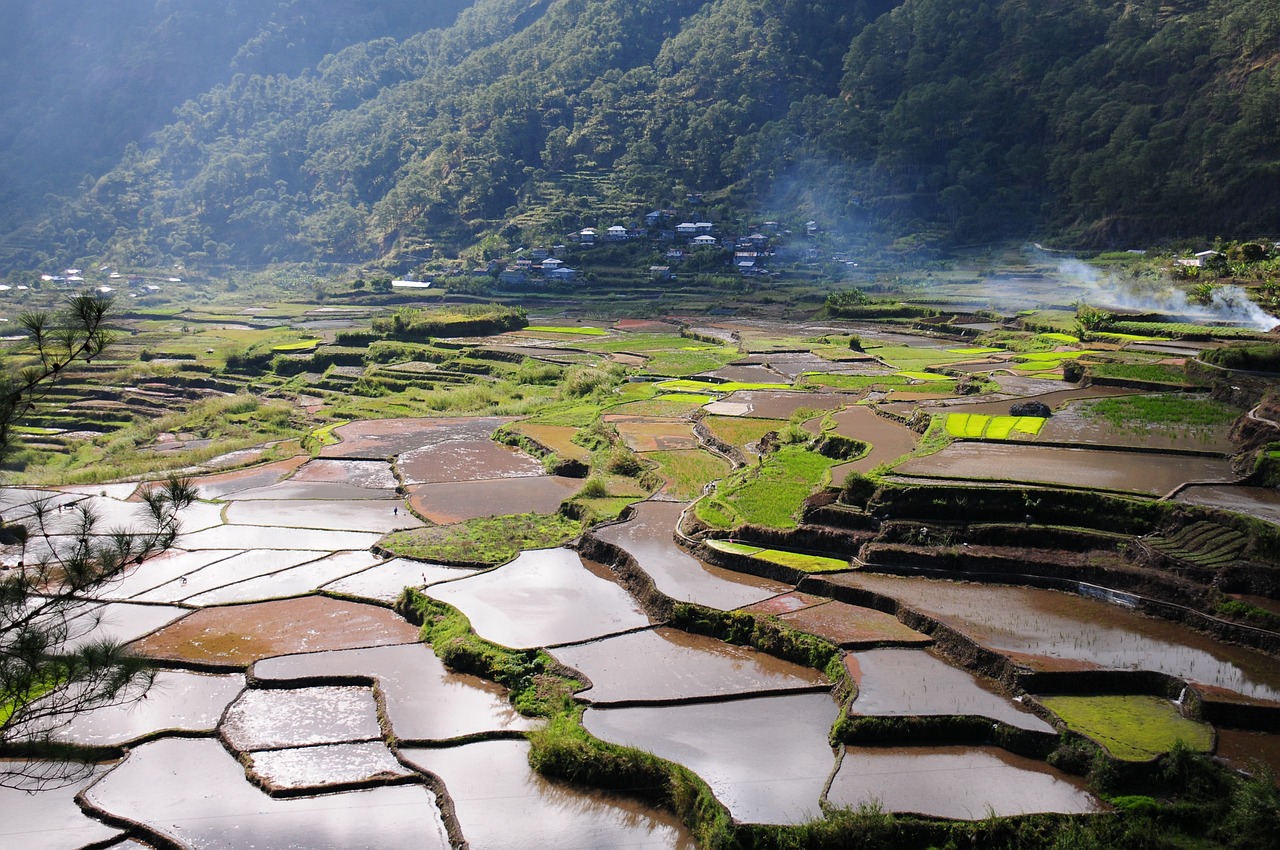
Data Reliability and Accuracy
Ensuring data reliability and accuracy is a significant challenge in field studies, and it is one that conservationists must face head-on. The integrity of the data collected directly influences the effectiveness of conservation strategies. If the data is flawed, the resulting decisions can lead to ineffective or even harmful outcomes. Imagine trying to navigate through a dense forest using a map that has incorrect information; you could easily end up lost or in danger. Similarly, inaccurate data can misguide conservation efforts.
Several factors can affect the reliability of data collected during field studies. For instance, observer bias is a common issue where the personal beliefs or expectations of the researcher may influence the outcome of their observations. This can lead to skewed data that does not accurately represent the true conditions of the ecosystem being studied. Additionally, environmental variability can introduce inconsistencies in data collection. Weather conditions, seasonal changes, and even time of day can affect the visibility and behavior of species, leading to discrepancies in population counts and habitat assessments.
To combat these challenges, conservationists must adopt rigorous methodologies and validation processes. This often includes the following:
- Standardized protocols: Implementing consistent methods for data collection helps minimize variability and bias. For example, using the same surveying techniques and equipment across different sites ensures that the data is comparable.
- Training observers: Providing thorough training for field researchers can reduce observer bias. Well-trained individuals are more likely to collect data accurately and consistently.
- Data triangulation: Using multiple data sources or methods to cross-verify findings enhances reliability. For instance, combining direct observations with remote sensing data can provide a more comprehensive picture of the ecosystem.
Moreover, it’s essential to establish a system for data validation. This could involve peer reviews, where other experts in the field assess the methodologies and findings, or conducting repeat surveys to confirm initial results. By implementing these strategies, conservationists can significantly enhance the reliability and accuracy of their data, ultimately leading to more effective conservation planning.
Q1: Why is data reliability important in conservation planning?
Data reliability is crucial because it ensures that conservation strategies are based on accurate information. Flawed data can lead to misguided decisions that could harm ecosystems.
Q2: What are some common challenges in ensuring data accuracy?
Common challenges include observer bias, environmental variability, and limited funding, which can impact the scope and quality of data collection.
Q3: How can observer bias be minimized during field studies?
Observer bias can be minimized through standardized protocols, thorough training for field researchers, and using multiple methods to cross-verify findings.
Q4: What is data triangulation, and why is it important?
Data triangulation involves using multiple data sources or methods to verify findings. It enhances the reliability of the results and provides a more comprehensive understanding of the ecosystem.
Frequently Asked Questions
- What are field studies and why are they important for conservation?
Field studies are hands-on research activities carried out in natural environments to gather real-world data about ecosystems. They are crucial for conservation because they provide insights that laboratory studies often miss, helping conservationists understand the complexities of ecosystems and make informed decisions for sustainable management.
- What types of data are collected during field studies?
Field studies collect both quantitative and qualitative data. Quantitative data includes measurable statistics like species population counts and habitat measurements, while qualitative data encompasses observations about species behavior and community perceptions. Together, these data types create a comprehensive picture of the ecosystem's health.
- How do field studies assess habitat conditions?
Field studies assess habitat conditions by examining various indicators such as species diversity, vegetation cover, and soil quality. By evaluating these factors, conservationists can identify which areas need protection or restoration, ensuring that biodiversity is preserved and ecosystems remain healthy.
- What challenges do field studies face?
Field studies encounter several challenges, including limited funding, accessibility issues, and concerns regarding data reliability. These obstacles can hinder the scope and quality of data collected, making it essential to secure adequate resources and implement rigorous methodologies to overcome them.
- How do community engagement and participation play a role in field studies?
Community engagement is vital in field studies as it fosters collaboration and ensures conservation strategies are aligned with local needs and values. By involving local communities, conservationists can build trust, enhance capacity through training, and create more sustainable, locally-driven conservation outcomes.
- What methodologies are commonly used in field studies?
Field studies utilize a variety of methodologies, including surveys, sampling techniques, and remote sensing. Each method serves a specific purpose, whether it’s to collect data on species populations, assess habitat conditions, or monitor environmental changes, all of which are crucial for effective conservation planning.



















